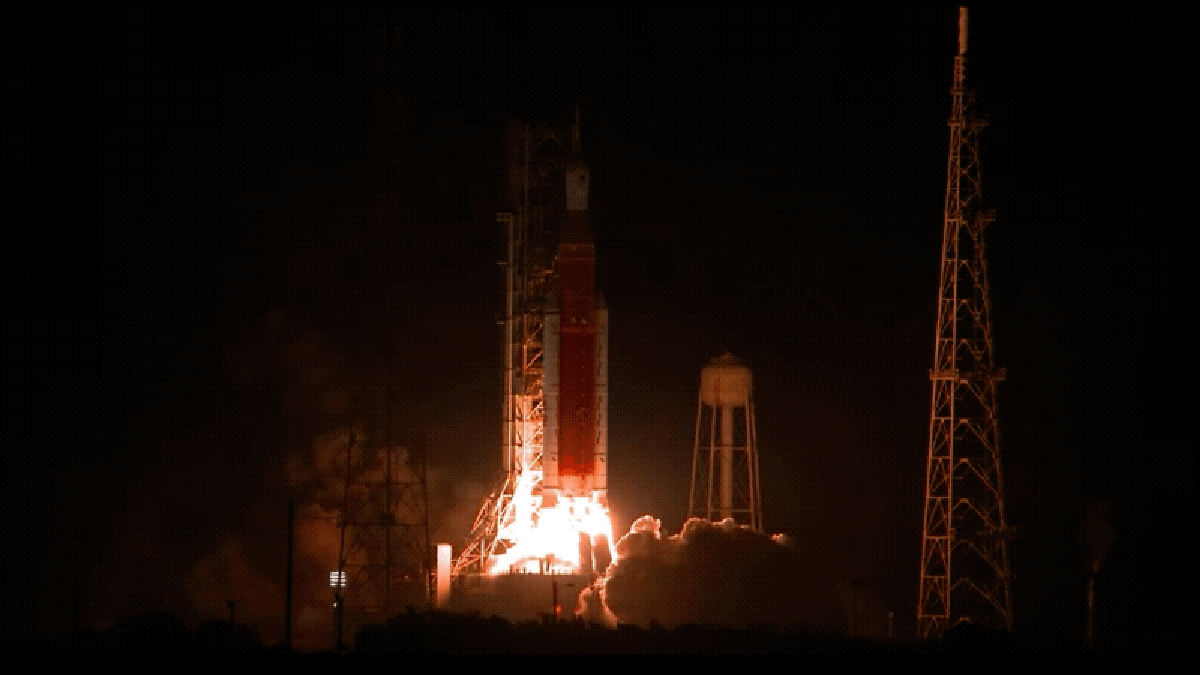
Roughly 25% of of SLS’s power comes from the four RS-25 engines at the base of the core stage, yet they provided little in terms of the visual spectacle. That’s because the RS-25′s burn hydrogen (the fuel) and oxygen (the oxidizer), producing water vapor and a plume that’s barely discernible to our eyes. These same four engines flew on the Space Shuttle, producing the same visual effect, or lack thereof.
Advertisement
The two solid rocket boosters, on the other hand, burn off a bunch of nasties, including aluminum powder (the fuel), the mineral salt from perchloric acid (the oxidizer), and polybutadiene acrylonitrile, or PBAN (the binder). “When it burns, oxygen from the ammonium perchlorate combines with aluminum to produce aluminum oxide, aluminum chloride, water vapor and nitrogen gas—and lots of energy,” according to NASA. It also results in a dramatic plume.
The successful launch, which came after two previous scrubs and years of delays, means NASA can now breathe a bit easier. The space agency plans to use the rocket extensively during its Artemis program, which seeks to return humans to the Moon for the first time since 1972.
G/O Media may get a commission
Advertisement
More: Why Hydrogen Leaks Continue to Be a Major Headache for NASA Launches